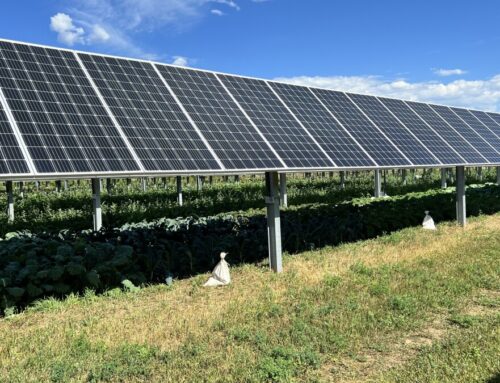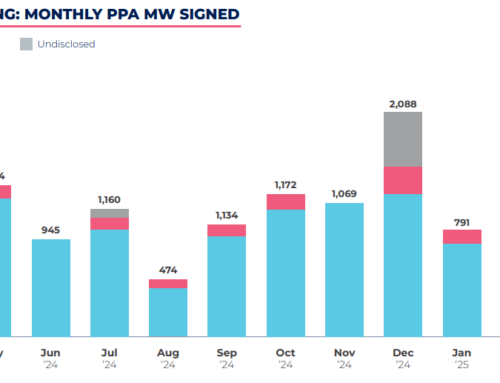TotalEnergies sticks with clean energy push as rivals retreat
April 15, 2025

At a lunch with TotalEnergies boss Patrick Pouyanné in 2019, drillers worried about the future asked what their roles would look like a decade down the line. For the chief executive it was “obvious”, they would still be drilling for oil.
TotalEnergies pushed further into renewables in 2021 as it and the rest of the industry responded to pressure to embrace the green transition. But Pouyanné also made the crucial decision to raise oil and gas output, using profits from its legacy business to fund the pivot into greener products.
Four years later, that gamble appears to be paying off. While rivals BP and Shell have retreated from promises to shrink their fossil fuel businesses, the French company’s plan to build its future around oil, gas and its partially green electricity arm remains unchanged.
“We think we can get the same level of profitability [from electricity] as oil and gas,” Olivier Jouny, the company’s head of renewable energy, told the Financial Times.
“If we can do that, there’s no reason for our shareholders not to follow us. Others have done an about-turn because they haven’t necessarily been able to demonstrate that.”
At an energy conference in London in February, Pouyanné stressed the point that oil and gas was key to his electricity ambitions. “I will not renounce oil and gas . . . because I am not a magician. The only way I have of financing all of my electricity investments . . . is because I take the cash from oil and gas,” he said.
Although TotalEnergies has suffered setbacks in some of its green initiatives, Pouyanné’s approach has helped the company avoid the U-turns forced on its main European rivals BP and Shell.

In March, activist Elliott Investment Management took a near 5 per cent stake in BP, forcing it to abandon its ambitious climate goals. BP had pledged in 2020 to cut oil and gas output by 40 per cent by the end of the decade before paring back the target two years ago and then scrapping it completely.
At Shell, chief executive Wael Sawan said in January the renewables business must start to generate returns as the company wrote down its US wind farms by almost $1bn. It has also scrapped its commitment made in 2023 to allow oil output to fall by 1-2 per cent a year until 2030.
In contrast, TotalEnergies consistently sought to increase oil and gas production by 3 per cent a year, while investing $4bn annually in its integrated power division, which focuses on producing and supplying electricity through wind farms, solar farms and gas-fired power stations.
“[TotalEnergies] were very pragmatic and in practice the world turned out that way,” said Irene Himona, an oil and gas analyst at Bernstein.
The group’s integrated power division is far from entirely green, remaining heavily reliant on gas. It was the source of 37 per cent of the company’s electricity generation in 2024.
TotalEnergies says gas-fired power is needed to balance out the intermittency of renewable energy sources, and will represent about a quarter of the division’s 100 terawatt hours of electricity in 2030.
The division is now the largest in the sector. It will produce 35 gigawatts of renewable power this year, rising to 100GW in 2030. BP had only committed to reaching 50GW by 2030 before its U-turn.
In a further sign of its commitment, TotalEnergies completed a €1.6bn acquisition of German wind and solar developer VSB Group this month, while also announcing deals on hydropower and renewables in Uganda and Canada.
Key to the company’s strategy is the aim for the integrated power division to be as profitable as oil and gas.
The group expects it to become cash flow positive in 2028, when it will generate about $4bn with the aim of delivering a 12 per cent return on capital employed, a widely used metric for assessing profitability in the industry.
This would be similar to returns generated from oil and gas when Brent crude is priced near $60 a barrel, a level Jouny described as a “stabilised, long-term view”. The integrated power division has delivered a return on capital employed of about 10 per cent, he said. TotalEnergies said in a trading update on Tuesday that it expected to report adjusted earnings of between $450mn and $500mn for the first quarter.
Despite its successes, the integrated power division has not avoided problems. A planned offshore wind project in New York and New Jersey has been put on hold for at least four years, after the Trump administration’s executive order to halt permitting for new projects.
It also faced difficulties with an offshore wind farm in Taiwan, the 640-megawatt Yunlin project, which was inaugurated in March. TotalEnergies, as lead developer, was forced to call on banks for additional financing, although Jouny did not disclose the extent of the cost overrun.
However, TotalEnergies’ strategy is not a bet on renewable power — but on demand for electricity generally. The International Energy Agency forecasts oil and natural gas demand to peak by 2030, while electricity demand is expected to continue to rise, by at least 4 per cent per year through to 2027.
“It is a strategy driven by demand [and] it is very clear that the one energy which will grow in the 21st century is electricity,” Pouyanné said at the conference in London.
Search
RECENT PRESS RELEASES
Related Post





